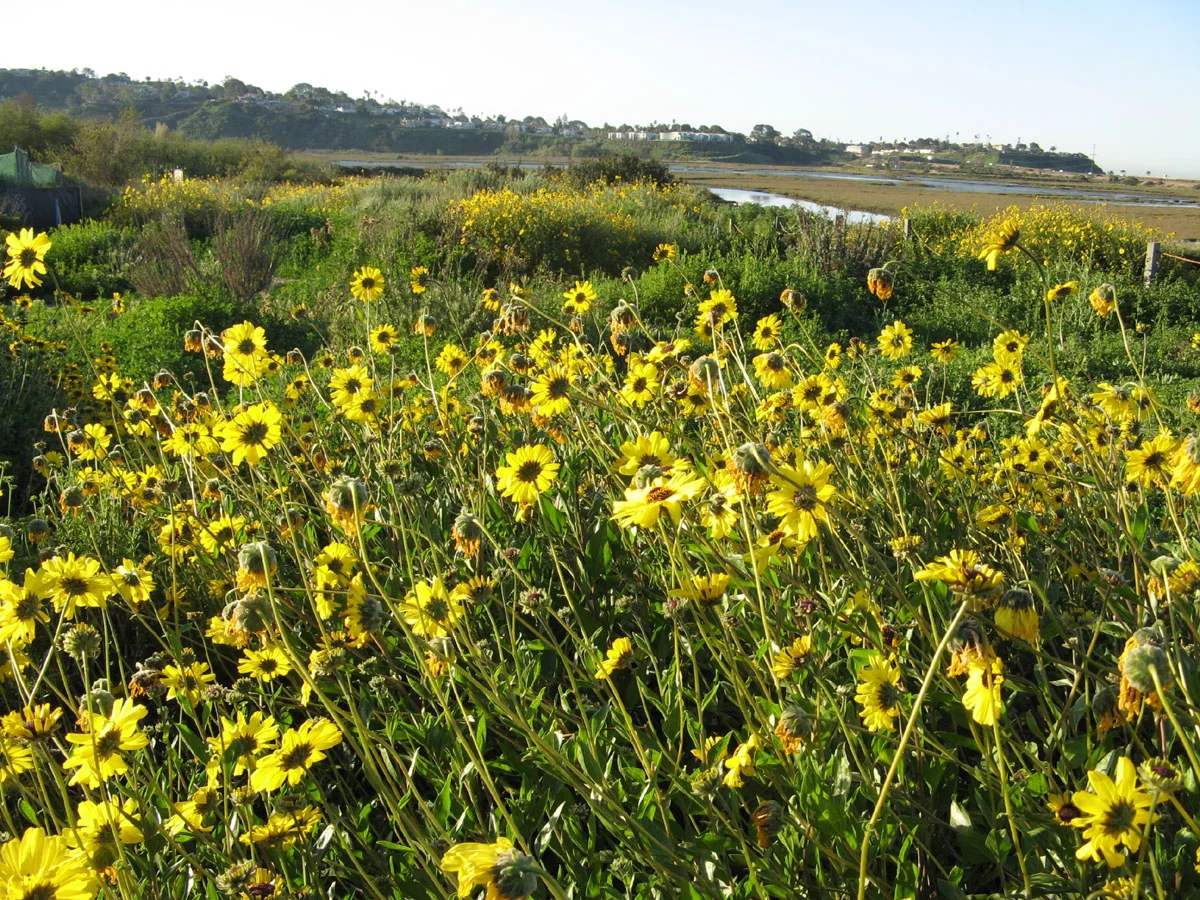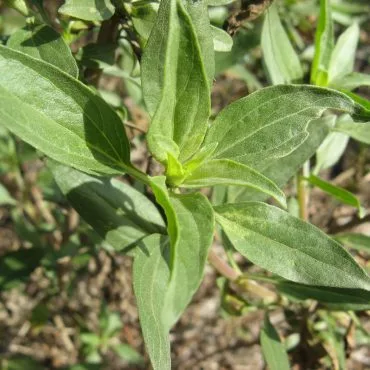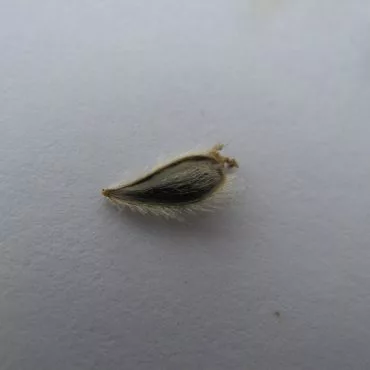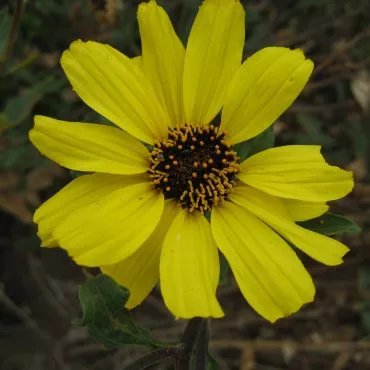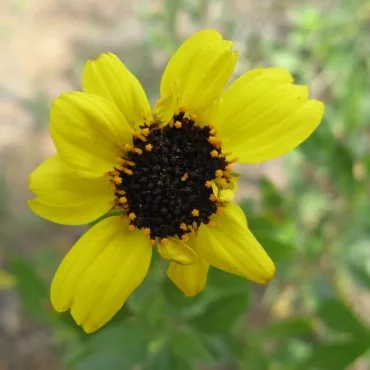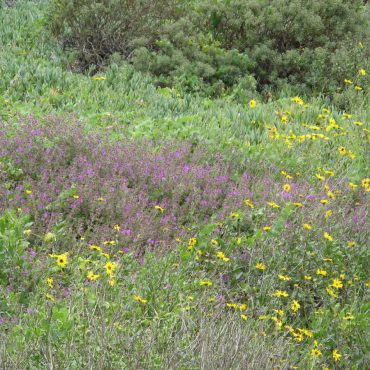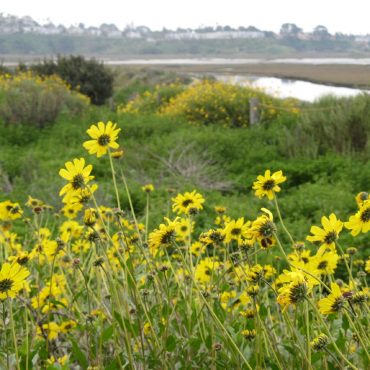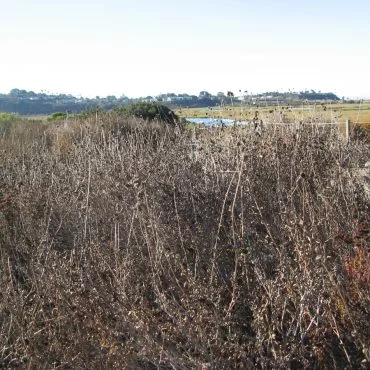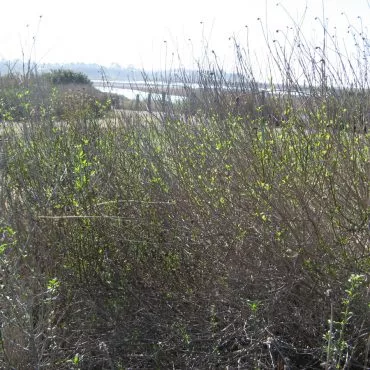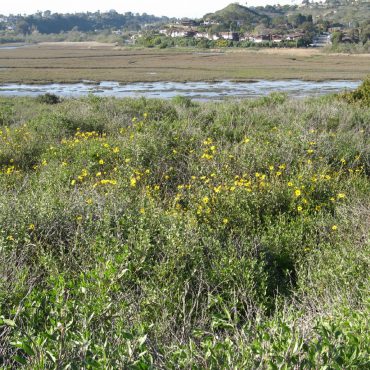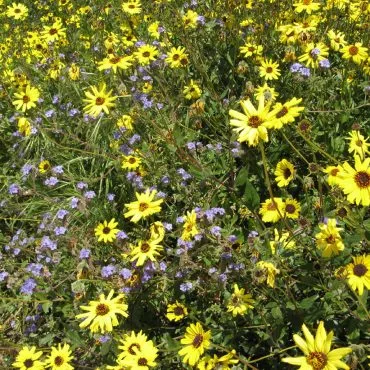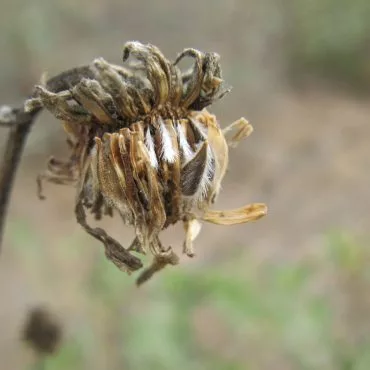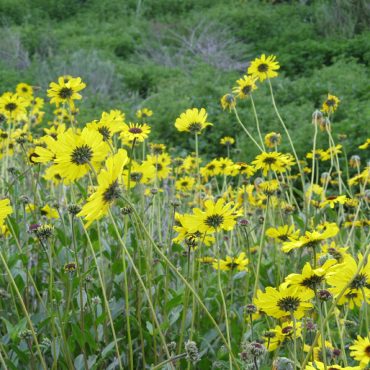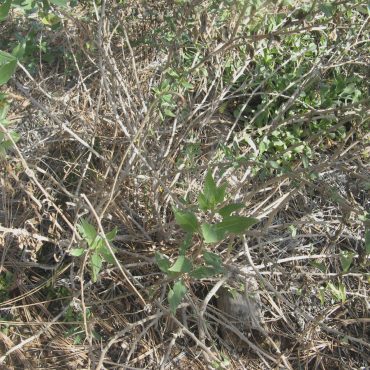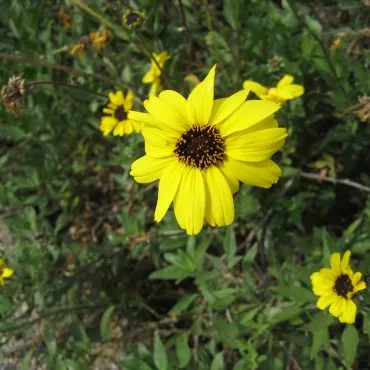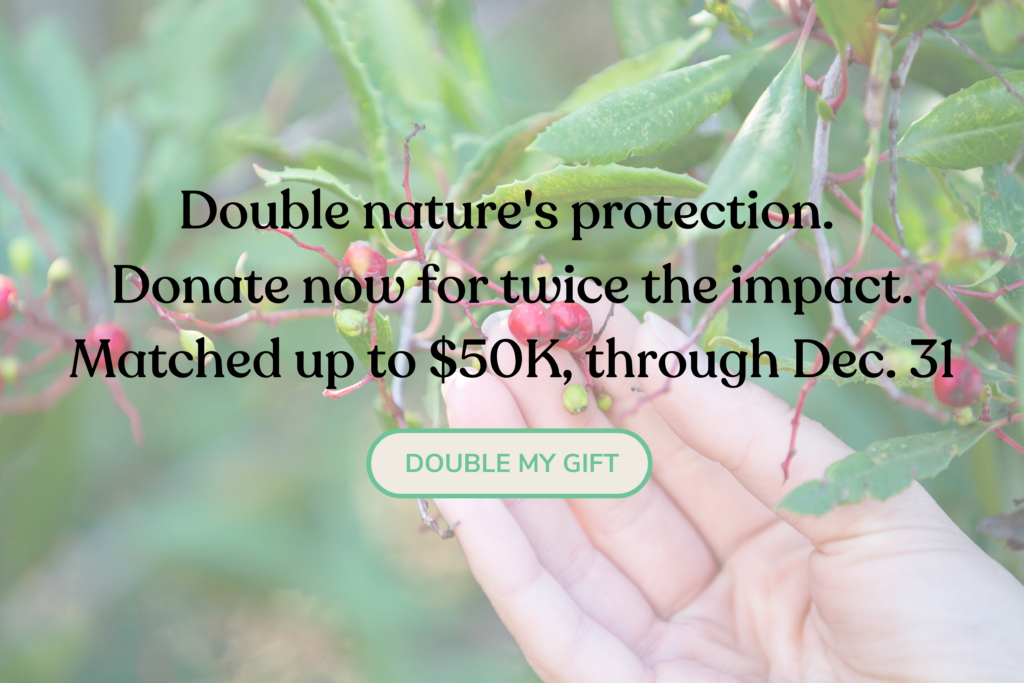Description
2,4,23,59
Bush sunflower is a rounded perennial shrub, usually less than 5 feet (1.5 m) in height. When not crowded, it may be as wide as or wider than high. Branches long, pale, often curved into a tangled mass; they are brittle, giving rise to one alternate name, California brittlebush.
Leaves are green, covered with very short hairs. They are usually 1¼-2½ inches (3-6 cm) long, ovate to elliptic, tapered to a narrow tip; they may be heart shaped at the base. Margins are smooth or finely toothed. Three prominent veins extend out from the base.23Foliage has a strong, characteristic odor, difficult to describe – a bit like cut green grass.
Flower heads are “daisies” with a purplish brown eye of disk florets (the delicate coloring can best be seen through a magnifying lens), surrounded by 15-25 bright yellow ray florets, which may be blunt or lobed at the tip. One to a few flower heads are produced from a long, loosely branched stem; flower heads extend above the foliage. The main bloom period is February through June,1 but single flower heads may be found throughout the year, especially where a little water is available.
Unlike many related species, the seeds of bush sunflower lack the pappus that act as parachutes, facilitating wind-dispersal of seeds. Instead the flattened seeds have a dense fringe of short hairs along the edges and sparse hairs on the flat surfaces. Presumably seeds are spread by birds and mammals.

